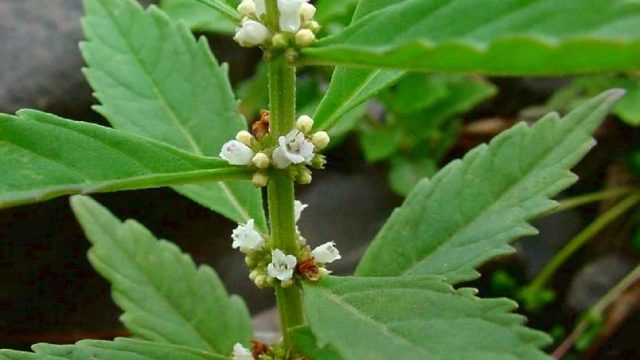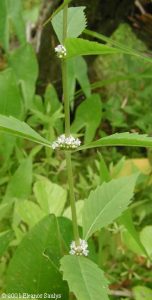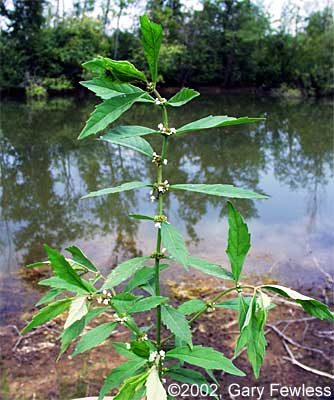Northern Bugleweed (Lycopus Uniflorus) is a species of flowering plant in the mint family. It is native to much of North America, where it can be found most often in moist areas, such as marshes. This is a perennial herb growing from a slender rhizome with thickened, tuberlike tips. The plant grows upright 10 to 50 centimeters tall. Its stem is lined with pairs of toothed leaves with heads of flowers in their axils. The flower is white and a few millimeters in length. The root of the plant was used as a food by several Native American groups
The crisp, white tubers of the Bugleweeds are often very abundant but sometimes scarcely developed. They are mild in flavor and make a most attractive radish-like relish either out-of-doors or at the table.
Boiled a short time in salted water, the tubers are an agreeable vegetable, much suggesting the corsnes of European markets. They are also good pickled.
On peaty or turfy shores or in meadows the tubers are borne on long subterranean stolons and are distant from the parent-plant and hard to find. When plants grow in open sand the tubers are often crowded, abundant and large, close about the bases of the old fruiting stems. This is the ideal place to secure them.
The tubers of Lycopus Sessilifolius are superior and might well be planted on open sandy shores to insure a good crop.
Edible Parts
- Root
Uses
Root – raw or cooked. The roots were a staple food for some native North American Indian tribes. The crisp white tubers can be eaten raw in salads or cooked in soups etc. When boiled for a short time they are said to make an agreeable vegetable, somewhat like Chinese artichokes (Stachys Affinis).
Medicinal Uses
The whole plant is antitussive and sedative.
Where Does Northern Bugleweed (Lycopus Uniflorus) Grow?
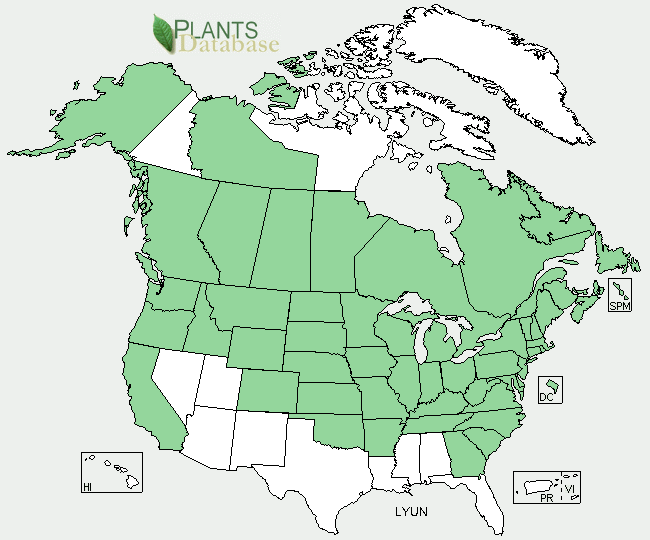
How To Identify Northern Bugleweed (Lycopus Uniflorus)
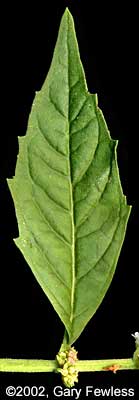
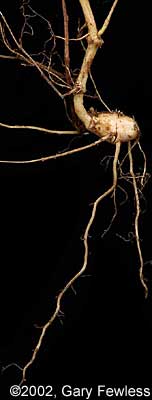
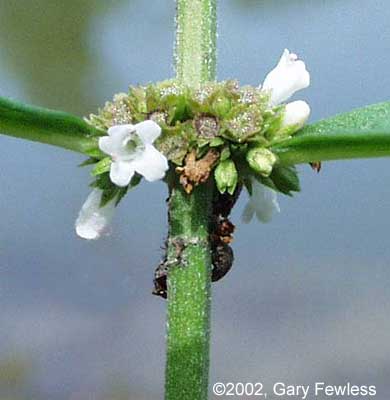
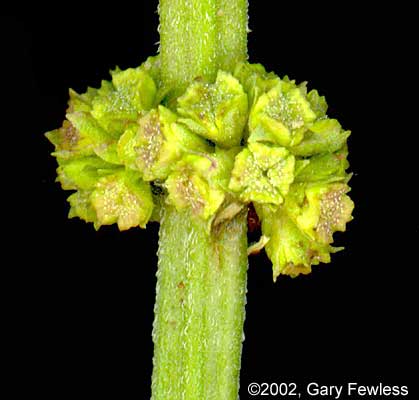
This is a 4″ to 40″ tall, erect, perennial forb that rises on a solitary stem from a long, slender, horizontal rhizome and fibrous roots. It produces an above-ground runner (stolon) that has a tuber at the tip from which next year’s stem will rise.
The stems are ascending to erect, branched or unbranched, green, square, and hollow. They may be hairless or inconspicuously and sparsely hairy, however this character is unreliable (Voss). They are weak and may sprawl without nearby supportive vegetation. There is a single vertical groove on each side of the stem.
The leaves are opposite, short-stalked, and unlobed. They are lance-shaped or oblong, ¾″ to 2⅜″ long, and narrow. Each pair of opposite leaves is at right angles to the leaf pairs above and below it. They taper at the tip to a point. They are wedge-shaped at the base with straight or slightly convex, rarely concave, sides along the base. The base of the blade continues along the stalk to or almost to the stem. The lower leaves are short-stalked and toothed, never lobed. They become progressively shorter stalked as they ascend the stem. Upper leaves are stalkless. The upper and lower surfaces are hairless or nearly hairless. The margins are shallowly toothed. Although this is a mint, when crushed the leaves do not smell of mint.
The inflorescence is a tight cluster of stalkless flowers in the leaf axils on the upper ⅔ of the stem. Pairs of clusters in opposite leaf axils form false whorls.

